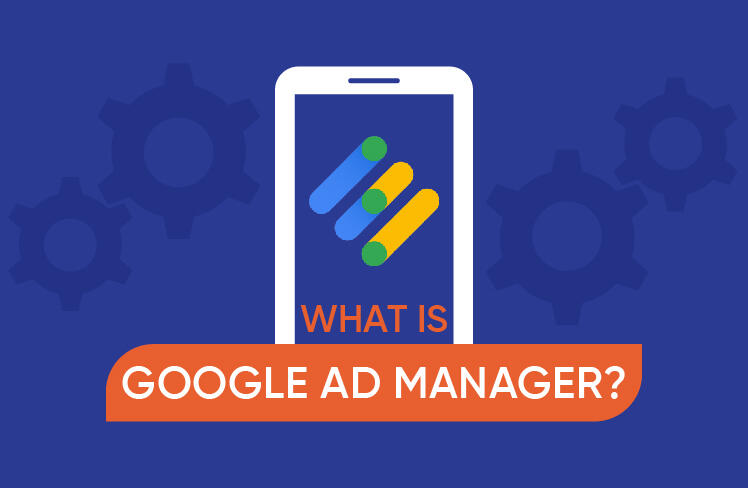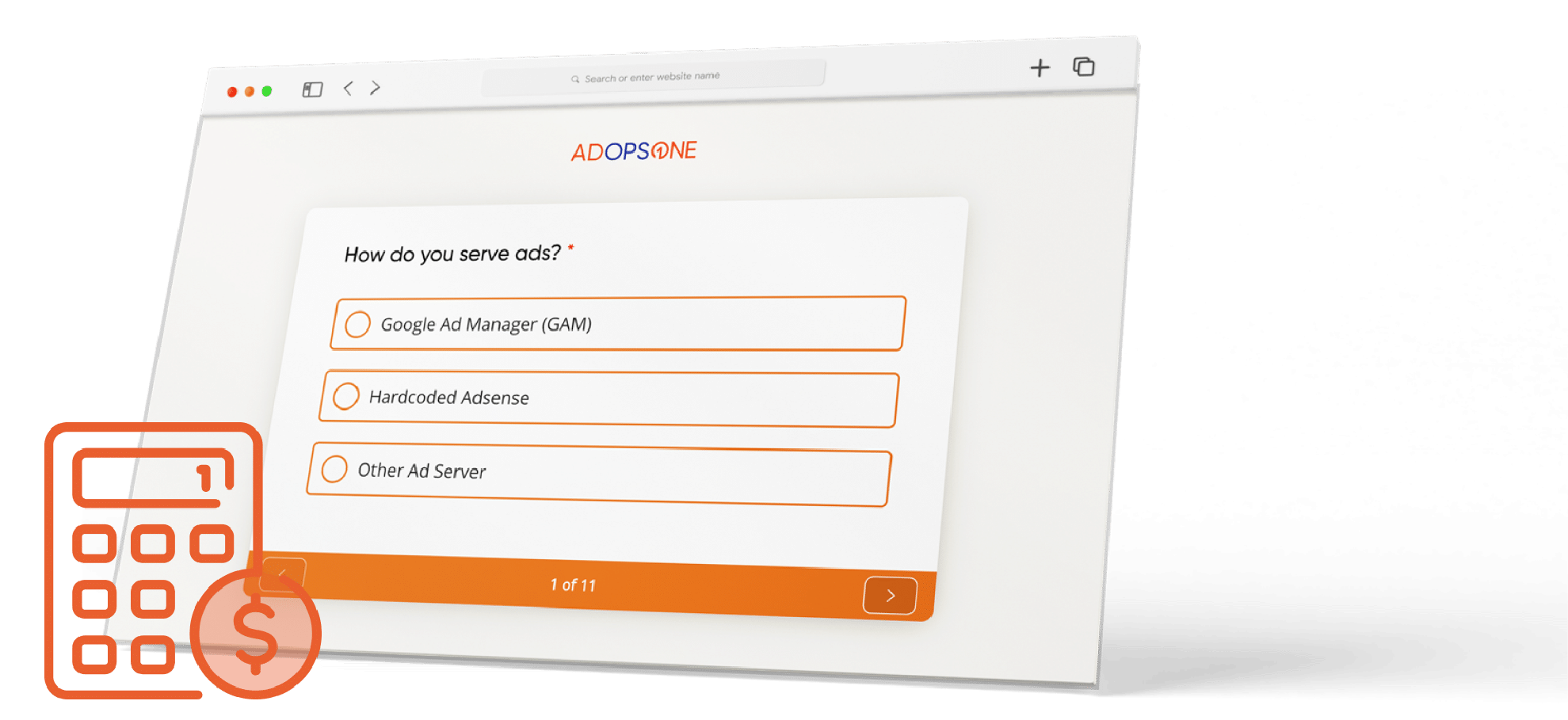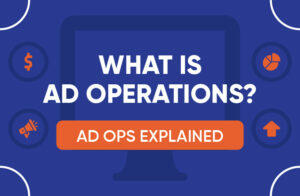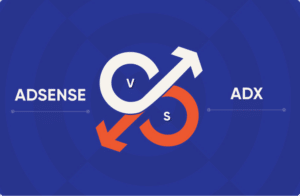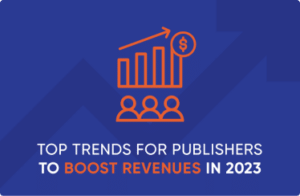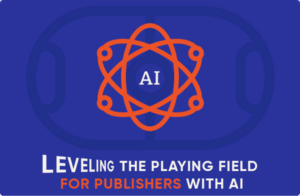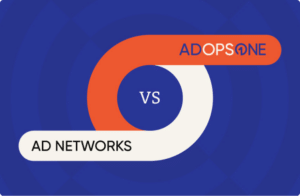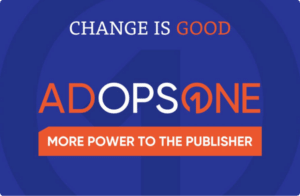Google Ad Manager (GAM) is central to many publishers and advertisers’ ad operations, thanks to its comprehensive suite of powerful features. In fact, nearly three quarters of publishers surveyed in 2022 use GAM as their preferred supply-side platform (SSP).
But GAM is so much more than just an SSP. It allows publishers and advertisers to connect via multiple ad exchanges and ad networks, manage and serve ads and analyze their performance via highly detailed and customizable reports.
Google launched GAM in 2018 as the unified face for its DoubleClick for Publishers (DFP) and DoubleClick Ad Exchange (AdX) solutions.
Since then Google has gone on to consolidate its grip over the ad market, with the US government estimating that the search giant has gobbled up more than 90% of the ad server market while AdX controls 50% share of the ad exchange market. Google Ads, meanwhile, is estimated to control more than 80% of the market share.
These numbers shed some light on GAM’s popularity with both publishers and advertisers, and underscore how important it is to fully understand this platform. With that said, let’s dive in to understand a little more about what makes GAM work and what publishers should know when weighing up whether they should sign up.
What Is Google Ad Manager (GAM)?
Google Ad Manager (GAM) is an ad management platform for publishers looking for more sophisticated and customizable ad solutions than those AdSense provides. While Google pitches GAM as a platform for large publishers, the reality is that any publisher can create an account and take advantage of its programmatic advertising features.
GAM supports multiple ad exchanges and networks, including AdSense, Google Ad Exchange (AdX) and other ad networks such as Pubmatic, OpenX, etc. The platform also supports desktop and mobile browser and in-app advertising.
GAM is available in two versions. The standard version, which is free to use, and a cloud-based, enterprise version called GAM 360 that comes with a usage-based pricing policy. GAM 360 includes all of the free version’s features as well as advanced capabilities such as Google’s Looker Studio to create customizable reports, data management platform (DMP) integration, multi-screen ad management, and more.
How Does Google Ad Manager Work?
In short, once a publisher has signed up for a GAM account and has defined their website’s ad units, the platform can then get to work on auctioning their ad inventory.
Publishers can use a single GAM network to define their ad inventory as well as create, manage, and report on ad campaigns. In fact, Google notes that most publishers that use GAM only use a single network.
Once publishers have defined where on a web page ads will appear, GAM will create a corresponding tag for each ad unit. This tag then needs to be inserted, after which point it will send an ad request to GAM every time a user arrives at the page.
Ad campaigns that target these units are allowed to serve an ad to that request, though GAM still selects which ad to serve. As noted above, publishers can mark certain ad inventory as special to prevent undesired line items accidentally appearing in strategic ad units.
What Are Google Ad Manager’s (GAM) Features?
As we mentioned at the start, GAM’s strength lies in its comprehensive suite of features that provide publishers with granular controls. These features allow them to manage how they sell ads, who they sell them to, and how they display ads.
Let’s take a closer look at GAM’s various features:
-
- Multiple ad formats: GAM supports six ad formats including display, native, in-stream, interstitial, rewarded, and app open ads. Each ad format is available in both display and video creative form, and across mobile and desktop browsers as well as mobile apps. Certain ad formats such as in-stream ads are also available for connected TV (CTV).
-
- Advanced targeting: The platform provides granular ad targeting based on a number of criteria including user device, language, operating system, web browsers, and geographical location to optimize ad campaigns.
-
- Yield management: The platform offers publishers a suite of yield management solutions that are designed to optimize the monetization process. These solutions—dubbed Dynamic Allocation, First Look, and Optimized Competition—help publishers to manage direct-sold ads, programmatic direct deals, and open auction demand to generate better revenue from each ad impression.
-
- Advanced programmatic capabilities: GAM gives publishers and advertisers access to advanced programmatic capabilities. Users can create programmatic proposals to negotiate with buyers, and deploy complex solutions such as Programmatic Direct and Programmatic Guaranteed that build on the potential of programmatic ad buying.
-
- Testing environment: GAM provides publishers with a testing environment to help streamline campaign creation. Publishers can create test objects—such as advertisers, ad units, creatives, etc.—before launching a live campaign. Publishers can also test ad tag performance and debug errors using the Google Publisher Console.
-
- Analytics tools: GAM comes with a set of powerful analytics tools that provide comprehensive reports and valuable insights. In addition to the GAM dashboard’s insights, the platform can easily integrate with other tools such as Google Analytics (GA), DataStudio, and BigQuery.
Google Ad Manager Account Requirements
There are only a handful of requirements that publishers need to meet in order to sign up for a GAM account. These are:
-
- Publishers must have a Google AdSense account.
-
- They must also have a website or app.
-
- All content and ads delivered through GAM must comply with Google’s Publisher Policies as well as Google Ad Manager Partner Guidelines.
While not strictly a requirement, Google has advised that the platform is for publishers who generate a “significant amount of ad revenue” from direct sales. The reason for this is because GAM is a complex tool and publishers need an above average level of technical expertise and knowledge of some industry-standard tools to get to grips with the platform.
In fact, given its complexity, it is not uncommon for publishers to outsource their GAM operations to third-party experts that provide managed GAM services and simplified reporting.
Google Ad Manager (GAM) Pros
GAM’s level of complexity is something of a double-edged sword, providing publishers with all the benefits that such a wide array of tools promises, while at the same time demanding and a not-insignificant level of commitment to master.
With that said, let’s have a look at the platform’s benefits before we weigh up its downsides.
-
- Unified platform: GAM provides a single and unified platform for publishers to monetize ad inventory across websites, mobile apps, and games.
-
- Advanced targeting options: Publishers can use GAM’s advanced targeting options to offer more value to their advertisers by defining their target audiences. Targeting options include user device, language, operating system, web browsers, operating system, and geographical location.
-
- Audience profiling: GAM 360 allows publishers to segment their website or app visitors accordinging to specific behaviors and interests. Publishers can leverage these segmented lists in their negotiations with advertisers. GAM audience solutions also comply with data privacy regulations.
-
- Monetization potential: By integrating with multiple ad exchanges, including Google AdX, and third-party ad networks, GAM offers access to a wide range of programmatic requests, increasing opportunities to sell ad inventory at better deals.
-
- Simplified open bidding: GAM’s open bidding allows publishers to invite third-party demand partners to participate in real-time bidding (RTB) for available inventory. Because open bidding doesn’t use complex JavaScript code like header bidding, it’s easier to implement and experiences shorter latency times. GAM allows select inventory to take part in open bidding without the need for any additional technical development.
-
- Support for special ad units: GAM allows publishers to mark certain ad units as special, which prevents traffickers from accidentally targeting strategic ad inventory. In other words, line items won’t be served to these special ad units unless they’ve been explicitly targeted.
-
- Support for PPIDs: Publisher-provided identifiers (PPIDs) is a GAM 360-only feature that allows publishers to create encrypted IDs, which GAM then assigns to users visiting the publisher’s app or website. PPIDs are a major advantage in the absence of third-party cookies, as they provide a data privacy-compliant solution to frequency capping. This ensures that the same ads are not repeatedly shown to the same user.
-
- Centralized ad management: GAM provides a central place to manage, sell, and deliver ads across different channels, including websites, mobile apps, and other online platforms.
-
- Diverse ad formats and inventory types: By supporting multiple ad formats and inventory types, the platform allows publishers to monetize a wide range of content.
Google Ad Manager Cons
Despite the breadth of GAM’s feature set, the platform is not without its flaws. The most obvious of these is complexity as already mentioned above, but there are several others also worth some consideration.
-
- Complexity: GAM is an advanced ad monetization solution with a steep learning curve. Due to its complexity and feature-rich nature, setting up, optimizing, and maintaining GAM requires significant resources.
This means it isn’t uncommon for publishers—who don’t have the in-house expertise or time or resources to upskill—to turn to third-party solutions providers for help in their day-to-day GAM operations.
-
- Cost: Some of the most powerful GAM features—such as audience segmentation, special ad units, and PPIDs—are only available in GAM 360, which comes with a usage-based pricing policy.
-
- Impression limits: GAM has an impression threshold beyond which publishers must upgrade to GAM 360. For video ads, this threshold is 800,000 monthly impressions. For other ad units, this threshold varies with location.
-
- Minimum payout threshold: Publishers must have a minimum of $100 in their GAM account to receive a payout in a particular month. In case they have less than $100 in their accounts, the amount gets rolled over into the next month. This is definitely more of an issue for smaller publishers, and is likely another reason for Google’s description of GAM as being designed for large publishers.
-
- Unconsolidated demand data: GAM doesn’t consolidate data from third-party demand partners, forcing publisher ad ops teams to aggregate data from all sources when preparing reports. This can be a lengthy and tedious process that eats up much-needed time and resources.
-
- Complex analysis: Yield management analysis and implementation is complex, requiring a level of expertise many publishers don’t have.
6 Google Ad Manager (GAM) Ad Formats
GAM provides support for display ads, native ad, in-stream ads, interstitial ads, rewarded ads and app open ads. Let’s take a closer look at each below.
1. Display Ads
Also known as banner ads, display ads are one of the most common digital ad formats, appearing in feeds, articles or around content. Display ads are usually placed in high-traffic locations with the goal of building brand awareness and driving traffic to the advertiser’s site.
2. Native Ad
Native ads are designed to be unobtrusive, blending into the surrounding content and creating a contextually cohesive reading experience for the visitor.
3. In-stream Ads
These are pre-roll, mid-roll, or post-roll video ads that appear within other video content. A perfect example would be the ads seen before, during and after videos seen on YouTube. In-stream ads can have different lengths, with shorter ones often being unskippable while longer ads offer the option to skip after a short pause.
4. Interstitial Ads
Interstitial ads cover the entire screen of a mobile device and typically appear as a user scrolls through content, transitions from one page to the next or progresses from one game level to another.
5. Rewarded Ads
A rewarded ad is presented as a value exchange to users, with a known example being the offer of watching a video in exchange for an extra life in a game. These ads aim to trade a digital good without tangible value for the user’s time and attention.
6. App Open Ads
App publishers use these ads to monetize their app load screens, with the ads appearing when users open or switch back to an app. The ads will display a small branding area to show users that they’re still within the original app.
Final Thoughts
Google Ad Manager (GAM) is a powerful tool for publishers, one that brings a broad swathe of ad operations to create a dominant competitor to ad servers, supply-side platforms (SSPs) and ad exchanges.
While the platform is undoubtedly complex, and certainly isn’t without its issues, publishers shouldn’t let concerns over the cost and time commitments be a barrier to entry. We’ve written before about how the combination of human expertise and AI can create a hybrid model publishers can use for effective ad ops.
This approach can help publishers increase control of their ad ops, leading to greater transparency and improved cost savings.
The AdOpsOne Dashboard simplifies complex GAM reporting for publishers by pulling data from GAM, Google Analytics, and multiple demand partners before aggregating it into a unified, simple view. Through the AdOpsOne Managed Services offering, you get to leverage the expertise of a team with 15+ years of handling daily ad operations for publishers across the globe. In short, we act as a publisher’s own, in-house ad ops team.
AdOpsOne has a proven track record of helping publishers realize increases in their eCPMs ranging from 30-300%. For publishers looking to maximize their ad revenue, AdOpsOne provides AI-powered ad operations assistance for publishers using GAM. Contact us to find out more.
Google Ad Manager—FAQs
Can You Use AdSense With Google Ad Manager?
Publishers can set up AdSense within Google Ad Manager (GAM), giving themselves greater control over which ads will appear to AdSense buyers. Publishers can make all of their ads available to AdSense buyers, show a limited number of ad units, or use line items across the GAM network.
Is Google Ad Manager an Ad Server or an SSP?
Google Ad Manager (GAM) is both an ad server and supply-side platform (SSP), while also being more than that. Google bills it as a “complete ad platform” that offers Google’s programmatic deals framework, private marketplaces (PMPs) and open auctions.
